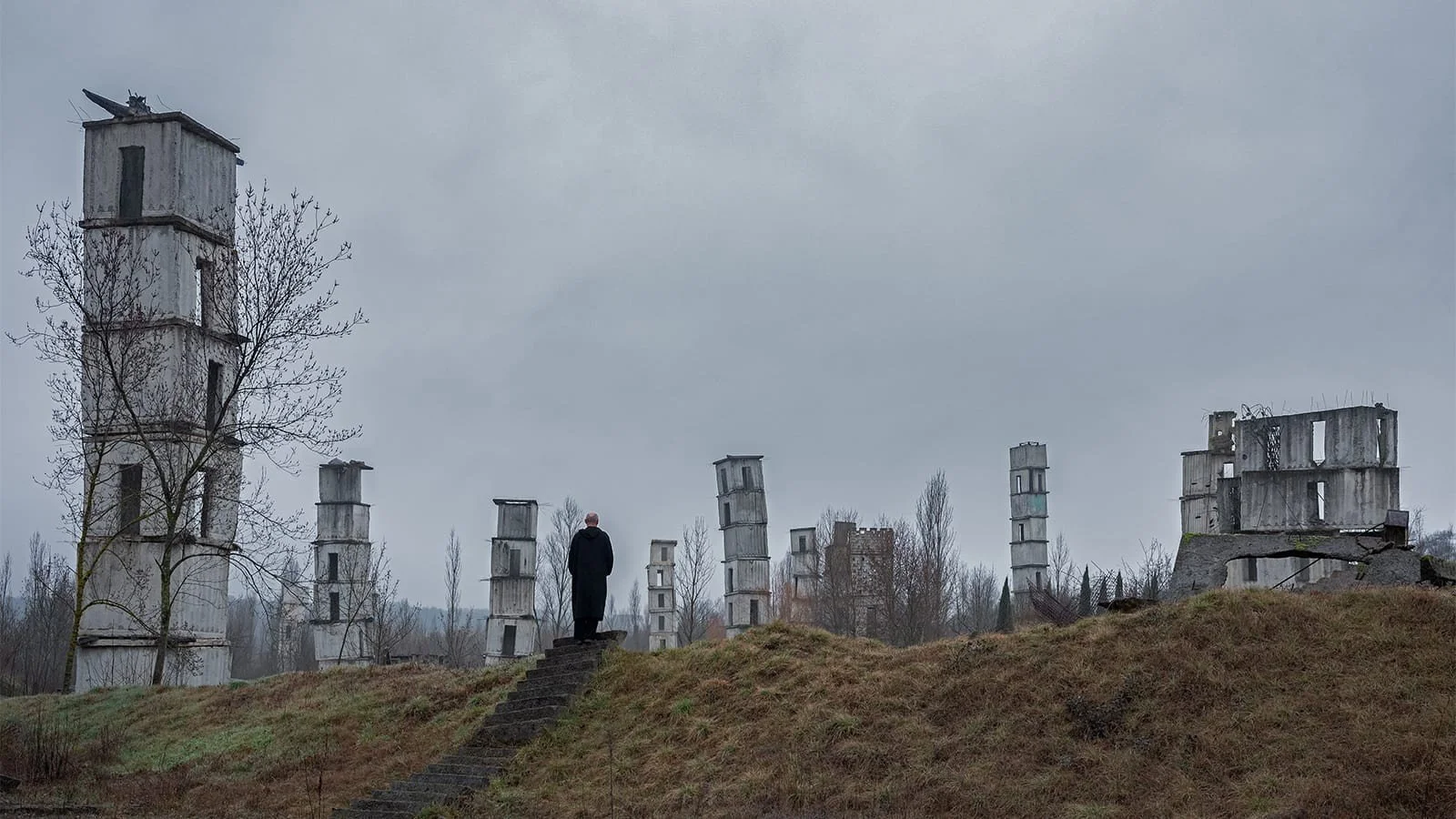Film review: Wim Wenders’s Anselm is a jaw-dropping 3-D trip into artist’s epic works
Redefining the artist biopic, the filmmaker captures the epic themes, stunning details, and punishing processes behind Anselm Kiefer’s work
The artist walks through tilting towers on his estate in southern France in Anselm.
Anselm opens in 3D at Fifth Avenue Cinemas on December 22
WITH HIS HYPNOTIC ANSELM, WIM WENDERS not only completely redefines the artist biopic but builds a visceral, 3-D testament to the power of art.
Using his full cinematic skillset, Wenders crafts an epic, visually stunning film that avoids the usual back-and-forth between interviews and artworks of traditional documentaries. Instead his portrait of major German artist Anselm Kiefer is an expressive artwork in itself—capturing the same dark and dreamlike quality of his subject’s grand-scale output.
Awe sets in immediately in the opening moments, Wenders’s camera gliding through Kiefer’s 200-acre estate, La Ribaute—the massive, multibuilding, sculpture-studded universe he’s built in the Cévennes countryside. He’s transformed the site of a former silk factory and its barns.
A pink dawn rises over a life-size wedding dress, puddles of the previous day’s rain settling into the creases of the long train that runs over pale rocks. There are more of these ghostlike gowns tucked into the landscape and displayed in greenhouses: branches sprout eerily from one’s empty necks, shards of glass stab the skirt of another. The filmmaker treats these objects with the reverence and three-dimensional magic they deserve, the soundtrack shifting from beautiful German lieder to the whispering of women’s voices.
This is just an entrée to Kiefer’s vast and varied output—all of it digging provocatively into Germany’s haunted past, its Nazi atrocities and its mythology. “The whole of society was silent then,” he reflects on the late 1960s and ’70s when he forced his compatriots to look in the mirror at their Nazi past—“the open wound of German history”.
In an industrial studio so huge he has to bicycle through it, we see the massive canvases he torches, covers with thick whacks of paint, sticks with dried flowers, stabs with glass shards, and melts with moulten metal. He turns them into nightmare landscapes; as he says, “You can’t just paint a landscape when a tank has driven through it.”
A view from La Ribaute in Anselm.
He pedals through floor-to-ceiling rows of the found materials he collects and integrates in his work: branches, dried grasses, discarded clothing, old photographs, seed pods. Elsewhere, a small city of teetering towers of shipping containers cover a field, while a lead airplane sprouts sunflowers (a recurring motif that is both a nod to Van Gogh but also the pastoral ideals of both Nazis and the postwar Morgenthau Plan).
Wenders works in dreamlike re-enactments of Kiefer’s childhood, a boy (Anton Wenders, Wim’s great-nephew) drawing in his attic bedroom, or lying in the long grass; and then of the bespectacled artist as a young man (Daniel Kiefer), toting his camera into wintry fields spiked with frosted sunflowers. Interspersed is historic footage, not just of Kiefer ruffling art-world feathers, but of the ruins of the postwar, bombed Germany he grew up in (Kiefer was born two months before VE Day)—imagery that sometimes overlays works that reference that rubble and destruction. Past and present, life and art flow together, much like they do in Kiefer’s works, and in the poetry of Paul Celan that so deeply inspires the artist.
On one level the film works as a revelatory biography. On another it is a trip through one of the most jawdropping works of art on the planet—one that spans warehouses, tunnels, and landscapes. (The three-dimensional experience, a must for art fans, simply puts you there.) But as you take in rooms filled with bikes weighed down with twigs and wheat, floating rusted submarines, bookshelves heaving with weathered tomes, and ladders leading to the heavens, you confront much larger questions about life, meaning, time, and the universe. Wenders, as ever, provides a vast and fluid enough frame to contain the magnitude of all of it.














